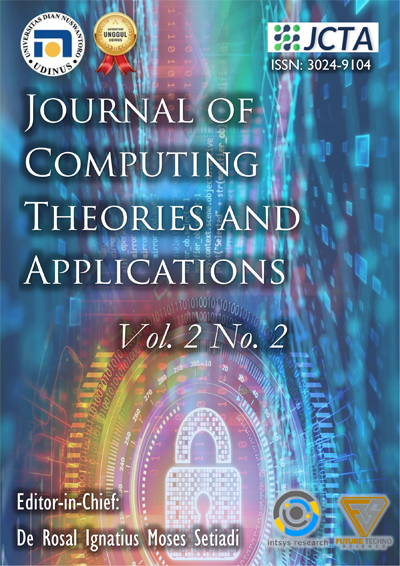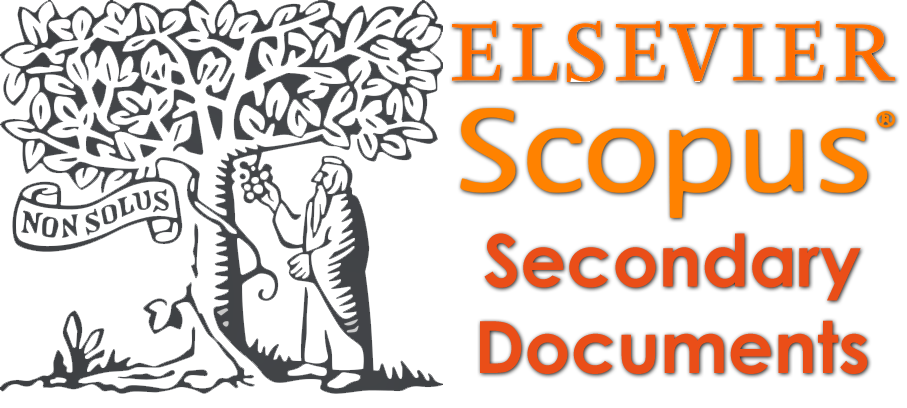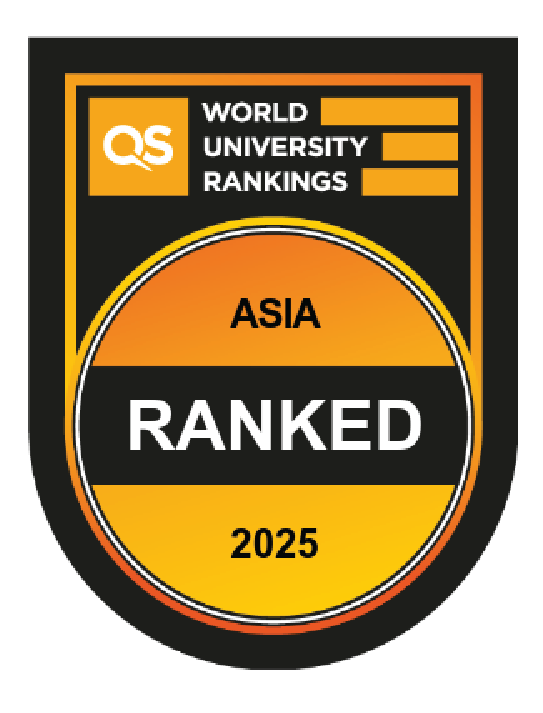A Mobile App Development for E-Waste Management in Bahrain (Athar)
DOI:
https://doi.org/10.62411/jcta.10930Keywords:
Agile-based SDLC model, Bahrain, E-waste, Managing Mobile application, OutSystems, RecyclizingAbstract
Bahrain still suffers from electronic solid waste annually due to ineffective waste disposal management. Compared to other Gulf Cooperation Council (GCC) countries, Bahrain generates the largest waste quantity per person, approximately 1.2 to 1.8 million tons of hazardous waste annually. Therefore, the present research article aims to manage the e-waste discarding mitigation by arranging the waste collection, presenting it for sale/purchase/donation (C2C, C2B, B2G), and organizing the waste recycling process. Derived from this aim, the article explores the e-waste phenomena and proposes the development of an e-waste mobile application named “Athar”. The significance of “Athar” lies in firstly, enabling citizens to live in a clean environment with limited diseases. Secondly, assisting the Ministry of Tourism attract more tourists. The research article embraces a seven-phased Agile-based SDLC method to analyze, design, implement, test, and evaluate Athar through the utilization of several research techniques, including questionnaires to collect user and system requirements, other techniques such as data flow diagrams, entity relationship diagram, database schema, etc. for the system design, OutSystems programming language to implement the mobile app, and one questionnaire based on Nielsen heuristics for usability evaluation. Findings demonstrate the adequacy of the Athar application with an outstanding usability score of 89.1%.References
Government of Bahrain, “About Bahrain,” 2024. https://bahrain.bh/wps/portal/en/BNP/ HomeNationalPortal%0A
WorldometersInfo, “Bahrain Population 2024,” 2024. https://www.worldometers.info/world-population/bahrain-population/%0A
Z. Stapić, E. G. López, A. G. Cabot, L. de Marcos Ortega, and V. Strahonja, “Performing systematic literature reviews in software engineering,” in Central European Conference on Information and Intelligent Systems, 2012, pp. 441–447.
Columbia University Mailman School of Public Health, “Content analysis method and examples,” 2023. https://www.publichealth.columbia.edu/research/population-health-methods/content-analysis
V. Armann-Keown and L. Patterson, “Content analysis in library and information research: An analysis of trends,” Libr. Inf. Sci. Res., vol. 42, no. 4, p. 101048, Oct. 2020, doi: 10.1016/j.lisr.2020.101048.
J. M. Addington-Hall, “Survey research: methods of data collection, questionnaire design and piloting,” in Research Methods in Palliative Care, J. M. Addington-Hall, E. Bruera, I. J. Higginson, and S. Payne, Eds. London, England: Oxford University Press, 2007, pp. 61–82. doi: 10.1093/acprof:oso/9780198530251.003.0005.
E. J. Adwan, J. Adwan, E. Alwedaei, and M. Mohsen, “A GCC Artificial Food Additives Management based Mobile Application Development,” J. Comput. Theor. Appl., vol. 1, no. 3, pp. 326–345, Feb. 2024, doi: 10.62411/jcta.9843.
S. Zafar, “Solid Waste Management in Bahrain,” 2023. https://www.ecomena.org/solid-waste-bahrain/%0A
Technische Universität Berlin, “Description of the systematic liiterature review method,” 2023. https://www.tu.berlin/en/wm/bibliothek/research-teaching/systematic-literature-reviews/description-of-the-systematic-literature-review-method
G. Sotelo, “What Is E-Waste and Why Is It a Problem?,” Treehugger, 2021. https://www.treehugger.com/what-is-e-waste-and-why-is-it-a-problem-5186270
M. Ikhlayel, “Environmental impacts and benefits of state-of-the-art technologies for E-waste management,” Waste Manag., vol. 68, pp. 458–474, Oct. 2017, doi: 10.1016/j.wasman.2017.06.038.
B. Ayvaz and A. Görener, “Reverse Logistics in the Electronics Waste Industry,” in Waste Management, IGI Global, 2020, pp. 1664–1680. doi: 10.4018/978-1-7998-1210-4.ch077.
T. L. Wu, “What Is E-Waste Recycling and How Is it Done?,” earth.org, 20023. https://earth.org/what-is-e-waste-recycling/
S. Chatterjee, “Sustainable Electronic Waste Management and Recycling Process,” Am. J. Environ. Eng., vol. 2, no. 1, pp. 23–33, Aug. 2012, doi: 10.5923/j.ajee.20120201.05.
J. Hong, W. Shi, Y. Wang, W. Chen, and X. Li, “Life cycle assessment of electronic waste treatment,” Waste Manag., vol. 38, pp. 357–365, Apr. 2015, doi: 10.1016/j.wasman.2014.12.022.
UN report, “UN report: Time to seize opportunity, tackle challenge of e-waste,” 2019. [Online]. Available: https://www.unep.org/news-and-stories/press-release/un-report-time-seize-opportunity-tackle-challenge-e-waste
B. Mourya, “An analytical study of e-waste and its impact on environmental pollution in India,” AD VALOREM- J. Law, vol. 5, no. 3, pp. 34–39, 2018.
P. Lein and D. A. Bruun, “The toxicological implications of e-waste,” Open Access Gov., vol. 40, no. 1, pp. 448–449, Oct. 2023, doi: 10.56367/OAG-039-9559.
E. A. Omondi and A. A. Chepkoech, Gloria Koech Kegode, “E-plastic Waste: A Review of Waste Stream Management Challenges and Opportunities for Environmental Sustainability,” Int. J. Environ. Sci. Nat. Resour., vol. 32, no. 4, Aug. 2023, doi: 10.19080/IJESNR.2023.32.556343.
H. Yang and S. Zhang, “Risk management of e-waste disposal in China: A life cycle perspective,” Energy Environ., vol. 35, no. 3, pp. 1235–1250, May 2024, doi: 10.1177/0958305X221140577.
J. Indrupati and T. F. Henari, “Consumer behaviour in E-waste disposal-A case for setting up an E-waste collection and recycling facility in Bahrain,” 2015 2nd Bahrain Int. Corp. Soc. Responsib. Conf., no. February 2015, pp. 1–16, 2015.
Arabia Weather, “What is the smallest Arab country in terms of area?,” Arabia Weather, 2022. https://www.arabiaweather.com/en/question/what-is-the-smallest-arab-country-in-terms-of-area#google_vignette
Ministry of Information, “Population and Demographics,” 2023. https://www.mia.gov.bh/kingdom-of-bahrain/population-and-demographics/?lang=en#:~:text=According to the official census for the year,in 2030%2C up from 621 thousand in 1999
BTM, “BusinessE-Waste – How We Consume and Manage it,” bahrainthismonth, 2021. https://www.bahrainthismonth.com/magazine/business/e-waste-how-we-consume-and-manage-it
“Waste management & recycling services,” 2023. https://www.wm.com/ (accessed Sep. 30, 2023).
“Bekia,” 2017. https://www.bekia-egypt.com/en/ (accessed Sep. 30, 2023).
Crown Industries BSCC, “Crown Industries b.s.c.(c) – Recyclers of Metals & Plastics,” 1997. https://www.crownbahrain.com/ (accessed Sep. 30, 2023).
“Ecotrade Group,” 2023. https://www.ecotradegroup.com/en/weee-pcb-catalogue (accessed Sep. 30, 2023).
“Etadweer,” 2021. https://www.etadweer.com/ (accessed Sep. 30, 2023).
“Pakam,” 2021. https://www.pakam.ng/ (accessed Sep. 30, 2023).
“WasteBazaar,” 2019. https://www.wastebazaar.com/ (accessed Sep. 30, 2023).
“Escrappy Recyclers,” 2021. http://escrappyrecyclers.com/ (accessed Sep. 30, 2023).
GreenE, “eWaste,” 2023. https://greene.gov.in/ (accessed Sep. 30, 2023).
ERF, “Electronics Recycle Factory – erf,” 2021. https://erf.com.qa/ (accessed Sep. 30, 2023).
Ecyclex, “Certified Recycler in Dubai, Abu Dhabi and across UAE,” 2012. https://www.ecyclex.com/ (accessed Sep. 30, 2023).
Madenat Recycling, “Madenat Alnokhba Recycling, Best E-waste recycling in UAE - Madenat Al Nokhba.” https://madenatrecycling.ae/ (accessed Sep. 30, 2023).
E. J. Adwan, Y. Al-Aradi, M. Essa, and H. Malabari, “A Comprehensive Study and Development of Unified Mobile-Based Admission System for GCC Universities,” J. Comput. Theor. Appl., vol. 1, no. 2, pp. 212–230, Dec. 2023, doi: 10.62411/jcta.9793.
A. Quatember, “A Standardization of Randomized Response Strategies,” Surv. Methodol., vol. 35, pp. 143–152, Jan. 2011.
Survey Monkey, “Sample size calculator,” 2023. https://www.surveymonkey.com/mp/sample-size-calculator/ (accessed Feb. 23, 2023).
J. O. Grady, System Requirements Analysis. Elsevier, 2014. doi: 10.1016/C2012-0-06079-6.
J. Semmlow, “Linear Systems Analysis in the Time Domain,” in Signals and Systems for Bioengineers, Elsevier, 2012, pp. 261–316. doi: 10.1016/B978-0-12-384982-3.00007-9.
Q. Li and Y.-L. Chen, “Data Flow Diagram,” in Modeling and Analysis of Enterprise and Information Systems, Berlin, Heidelberg: Springer Berlin Heidelberg, 2009, pp. 85–97. doi: 10.1007/978-3-540-89556-5_4.
R. Ibrahim and S. Y. Yen, “Formalization of the Data Flow Diagram Rules for Consistency Check,” Int. J. Softw. Eng. Appl., vol. 1, no. 4, pp. 95–111, Oct. 2010, doi: 10.5121/ijsea.2010.1406.
M. Rouse, “Process Specification,” Techopedia, 2012. https://www.techopedia.com/definition/28636/process-specification.
R. Lichtenthaeler, S. Böhm, J. Manner, and S. Winzinger, A Use Case-based Investigation of Low-Code Development Platforms. 2022.
B. Grácio, “I’m a Magic MABS: How the Mobile Apps Build Service Works,” OutSystem Blog, 2018. https://www.outsystems.com/blog/posts/how-mobile-apps-build-service-works/ (accessed Mar. 07, 2023).
A. Jacinto, M. Lourenço, and C. Ferreira, “Test mocks for low-code applications built with OutSystems,” in Proceedings of the 23rd ACM/IEEE International Conference on Model Driven Engineering Languages and Systems: Companion Proceedings, Oct. 2020, pp. 1–5. doi: 10.1145/3417990.3420209.
N. Juristo, A. Moreno, S. Vegas, and M. Solari, “In Search of What We Experimentally Know about Unit Testing,” IEEE Softw., vol. 23, no. 6, pp. 72–80, Nov. 2006, doi: 10.1109/MS.2006.166.
T. Hamilton, “What is Unit Testing?,” guru99, 2024. https://www.guru99.com/unit-testing-guide.html
J. Nielsen, “Enhancing the explanatory power of usability heuristics,” in Proceedings of the SIGCHI conference on Human factors in computing systems celebrating interdependence - CHI ’94, 1994, pp. 152–158. doi: 10.1145/191666.191729.
Downloads
Published
How to Cite
Issue
Section
License
Copyright (c) 2024 Ehab Juma Adwan, Noor Mohamed, Hayat Bureshaid, Batool Mohamed

This work is licensed under a Creative Commons Attribution 4.0 International License.















